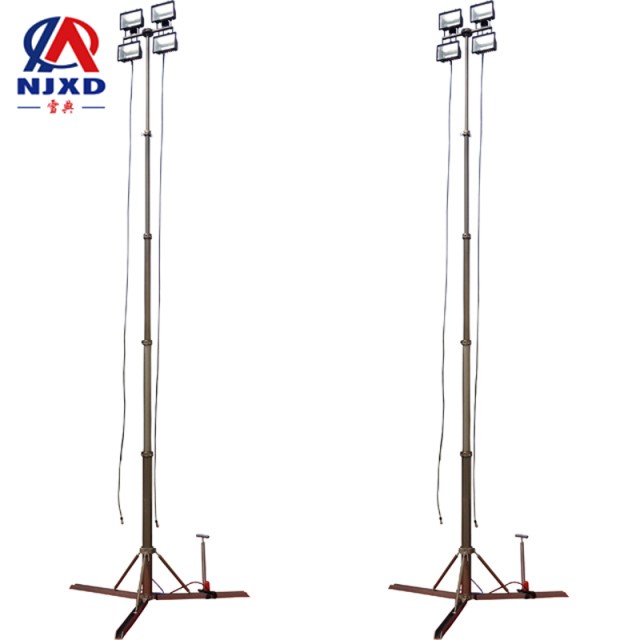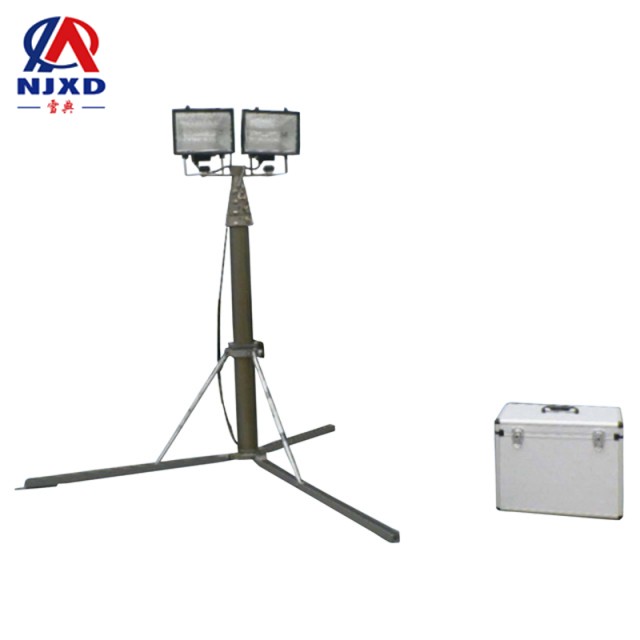NEWS
The way and development prospect of lifting lighting bracket light source
Time:2021-03-25 View:

Light source is a name of physics. Some objects in the universe are luminous and some are non-luminous. We call the objects that can light themselves and are emitting light as light sources. The Sun, the lights on, and the burning candles are all light sources. Ordinary people call light source "bright". In physics, "bright" means not light source but foreign light.
Historical origin
At the end of the 18th century, human beings began to study electric light sources.
In the early 19th-century, H. David of England invented arc lamp carbon.
In 1879, T.A. Edison of the United States invented the carbon filament incandescent lamp with practical value, which enabled human beings to enter the era of electrical lighting from the long flame lighting. In 1907, drawn tungsten wires were used as incandescent bodies.
In 1912, I. Langmuir and others from the United States studied gas incandescent lamp, which improved the luminous efficiency of incandescent lamps, prolonged their life span and expanded the application range of incandescent lamps.
In the early 1930 s, the low voltage sodium lamp was successfully developed.
In 1938, Europe and the United States developed fluorescent lamps, with luminous efficiency and service life more than three times that of incandescent lamps, which was a major breakthrough in electric light source technology.
In the 1940 s, high-pressure mercury lamps entered the practical stage. In the late 1950 s, the tungsten halogen lamp with extremely small volume and light attenuation came out, which changed the state of thermal radiation light source technology with attenuate progress, which was another major breakthrough in electric light source technology. In the 1960 s, metal halide lamps and high-pressure sodium lamp were developed, and their luminous efficiency was much higher than that of high-pressure mercury lamps.
In the 1980 s, fine diameter compact energy-saving fluorescent lamp, low power and high pressure sodium lamp and low power metal halide lamps appeared, which made electric light sources enter a new era of miniaturization, energy saving and electronization.

Specific meaning
In physics, it refers to objects that can emit electromagnetic waves of a certain wavelength range (including visible light, ultraviolet light, infrared light, X-ray and other invisible light). Usually refers to the luminophor that can emit visible light. Any object that can shine itself is called light source, also known as luminophor. For example, the sun, stars, lights and burning substances are all light sources.
However, such as the moon surface, desktop, white paper, paper books and so on rely on them to reflect foreign light to make people see them. This is called "bright" and cannot be called light source or luminophor. The visible light source is indispensable in our daily life. Visible light and invisible light sources are also widely used in industry and agriculture, medicine and national defense modernization.
The object that itself is glowing is called the light source. Light sources can be divided into natural (natural) light sources and artificial light sources. In addition, according to the transmit of light direction, the light source can be divided into point light source and parallel light source.
Production path
Thermal effect
The first type is light generated by thermal effects. Sunlight is a good example. In addition, candles and other items are the same. This kind of light will change its color with the change of temperature.
Atomic Transition
The second type of atomic transition luminescence. Fluorescent lamp tube fluorescent substances coated on the inner wall are excited by electromagnetic wave energy to generate light. In addition, the principle of neon lights is the same. Atomic luminescence has its own characteristic spectral line. Scientists often use this principle to identify element types.
Radiant Light
The third category is the light generated when the charged particles in the substance accelerate their movement. For example, the synchronous radiation emitted by the synchronous accelerator (synchrotron) during Operation carries powerful energy at the same time.
In addition, the light blue light (Cherenkov radiation) emitted by Atomic Furnace (nuclear reactor) also belongs to this kind. The so-called "Cherenkov radiation" means that the speed of charged particles in the medium may exceed the speed of light in the medium. In this case, radiation will occur, similar to "Sonic Boom".
Note: This is not the true SuperSpeed. The true SuperSpeed refers to the speed of light exceeding the speed of light in vacuum. This phenomenon is called Cherenkov effect.

Development Prospect
The invention of electric light source promotes the construction of electric power device. The electric light source has high conversion efficiency, stable electric energy supply, convenient control and use, safety and reliability, and can easily count energy consumption with instruments and meters. Therefore, in more than 100 years after its appearance, it soon gained popularity. It not only becomes a necessity of human daily life, but also plays an important role in industry, agriculture, transportation, national defense and scientific research.
The world's lighting power (the power consumption of lighting sources) accounts for about 10% ~ 20% of the gross generation. In China, lighting electricity accounts for about 10% of gross generation. With the rapid development of China's modernization, the electricity consumption of lighting increases year by year, while the growth rate of electricity is not suitable. Therefore, the research, development and popularization of energy-saving electric light sources have attracted people's great attention.
It is mainly to improve the luminous efficiency, develop efficient and energy-saving light sources with small size, improve the color rendering of electric light sources and prolong the service life. The specific ways to achieve the above goals are to develop and develop new materials, adopt new processes, further study new Luminous mechanisms and develop new electric light sources. The most realistic way is to improve the manufacturing technology of the existing electric light source and adopt new production equipment with good automation performance.
